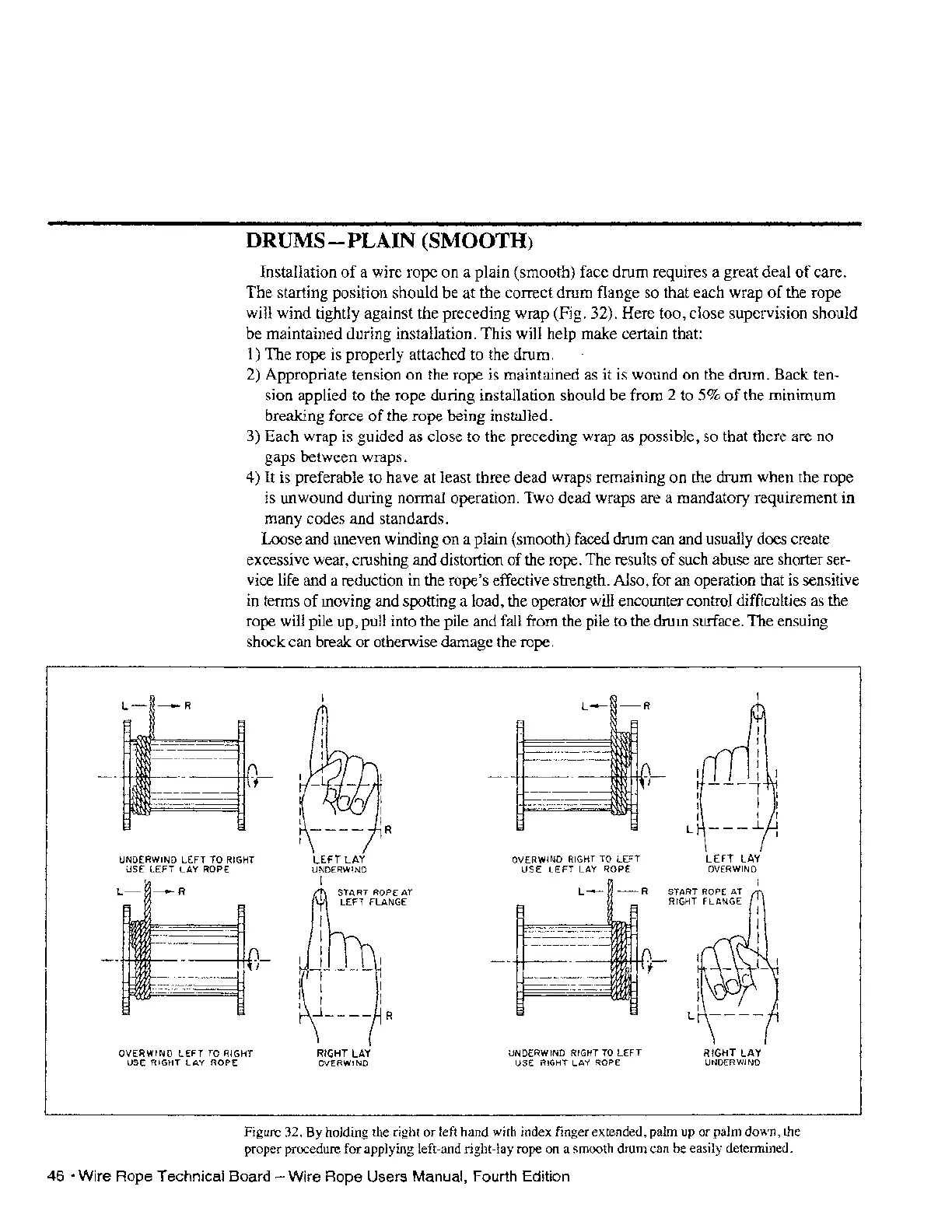L-
-R
DRUMS-PLAIN
(SMOOTH)
Installation
of
a wire rope on a plain (smooth) face drum requires a great deal
of
care.
The
starting position should be at the correct drum flange so that each wrap
of
the rope
will wind tightly against the preceding wrap (Fig. 32). Here too, close supervision should
be
maintained during installation. This will help make certain that:
1)
The
rope
is
properly attached to the drum.
2) Appropriate tension
on
the rope is maintained as it is wound on the drum. Back ten-
sion applied to the rope during installation should be from 2 to 5%
of
the minimum
breaking force
of
the rope being installed.
3) Each wrap is guided as close to the preceding wrap as possible, so that there are no
gaps between wraps.
4) It is preferable to have at least three dead wraps remaining on the drum when the rope
is unwound during normal operation. Two dead wraps are a mandatory requirement in
many codes and standards.
Loose and uneven winding
on
a plain (smooth) faced drum can and usually does create
excessive wear, crushing and distortion
of
the rope. The results
of
such abuse are shorter ser-
vice life and a reduction in the rope's effective strength. Also, for an operation that
is
sensitive
in terms
of
moving and spotting a load, the operator will encounter control difficulties as the
rope will pile up, pull into the pile and fall from the pile to the drum surface. The ensuing
shock can break or otherwise damage the rope.
L--
-R
-
f,.
UNDERWIND
LEFT
TO
RIGHT
USE
LEFT
LAY
ROPE
LEFT
LAY
UNDERWIND
I
OVERWIND
RIGHT
TO
LEFT
USE
LEFT
LAY ROPE
LEFT
LAY
OVERWIND
L-
-R
----t+:i:.[L
_~~~"I
OVERWIND
LEFT
TO
RIGHT
USE RIGHT
LAY
ROPE
START
ROPE
AT
LEFT
FLANGE
RIGHT
LAY
OVERWIND
L--~
-R
UNDERWIND
RIGHT
TO
LEFT
USE
RIGHT
LAY
ROPE
t
RIGHT
LAY
UNDERWIND
Figure 32. By holding the right or left hand with index finger extended, palm up or palm down, the
proper procedure for applying left-and right-lay rope on a smooth drum can
be easily determined.
46·
Wire Rope Technical Board - Wire Rope Users Manual, Fourth Edition
